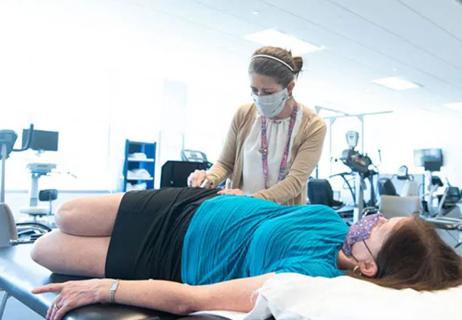What neurologists need to know about this emerging development

The milieu of drug treatment for multiple sclerosis (MS) is changing, as a number of disease-modifying therapies are expected to go off-patent soon, opening the door for generics and biosimilars. But the implications for MS therapy are not as straightforward as they are for medications in many other therapeutic areas, says neurologist Jeffrey Cohen, MD, Director of the Experimental Therapeutics Program at Cleveland Clinic’s Mellen Center for Multiple Sclerosis Treatment and Research.
Cleveland Clinic is a non-profit academic medical center. Advertising on our site helps support our mission. We do not endorse non-Cleveland Clinic products or services. Policy
“Considering the high cost of disease-modifying therapies for MS, the savings from generics and biosimilars are potentially substantial,” observes Dr. Cohen, who has spoken and written extensively on generics and biosimilars in MS. “But neurologists must proceed with caution to ensure that our patients continue to receive the best therapy available.”
Similar to generic drugs, biosimilars achieve FDA approval by meeting strict standards showing that they have no clinically meaningful differences compared with their index drug in terms of safety, purity and potency. In general, generics can be approved through abbreviated processes that usually avoid duplicating clinical trials.
Unlike generics, which generally involve simple chemicals, biosimilars tend to involve large and complex molecules produced from living organisms. Examples include monoclonal antibodies, therapeutic proteins and vaccines.
Because complex molecules are involved, the evaluation required for FDA approval of biosimilars is much more extensive — and expensive — than what’s required for typical generic products. And particularly for MS, a disease for which clinical end points can be difficult to pin down and can take years to meet, testing for any new drug tends to be a lengthy and costly process.
“The FDA must make a trade-off,” says Dr. Cohen. “On the one hand, they must confirm safety and efficacy for new drugs. On the other hand, they don’t want to make the process for evaluating biosimilars so costly that industry isn’t willing to develop less-expensive alternatives.”
The FDA has approved two generic versions of glatiramer acetate, a complex mixture of synthetic polypeptides produced through chemical processes. These approvals, which represent the first FDA clearance of generic or biosimilar disease-modifying therapies for MS, were based on physicochemical equivalence as well as equivalent biological and immunological effects in a murine model of autoimmune encephalomyelitis.
Dr. Cohen notes that a clinical trial was required for approval by the European Medicines Agency, as glatiramer acetate is classified in Europe as a nonbiological complex drug. This difference in how the compound was viewed led to a phase 3 international clinical trial to show equivalence to the brand-name version. The core study findings of the GATE trial (Glatiramer Acetate clinical Trial to assess Equivalence with Copaxone) were published in JAMA Neurology in December 2015. Results of the trial’s 15-month open-label extension were published in Multiple Sclerosis Journal in December 2017.
“The GATE trial demonstrated comparable efficacy and safety to Copaxone, as well as good tolerability that was maintained in study patients for two years,” says Dr. Cohen, who was lead investigator of the GATE trial. “Such evidence gives us confidence that the generic version is equivalent to the brand-name drug.”
Although Dr. Cohen is unaware of clinical trials currently underway for other generic or biosimilar versions of disease-modifying therapies for MS, he expects to see them soon since patents for many current drugs are due to expire shortly. The same phenomenon applies to therapies for several neurological conditions beyond MS, he notes.
While he views the availability of generics and biosimilars as a good thing, he says it also raises concerns. Citing experiences with generic anticonvulsants and antidepressants, which sometimes appear to have more variable disease control and side-effect profiles than their brand-name counterparts, he asks, “Are the drugs always equivalent? It’s difficult to know, especially in a disease as variable as MS.”
But with the price tag on disease-modifying therapies for MS sometimes surpassing $100,000 per patient annually, third-party payers are understandably likely to require less-expensive options when they become available.
“This is a difficult issue,” Dr. Cohen concludes. “On one hand, we’re all concerned with the high cost of healthcare, of which medications are a big part. But doctors and their patients don’t want prescription choices dictated solely on cost.”
Dr. Cohen reports personal compensation for consulting for Adamas, Convelo, EMD Serono, Novartis and Pendopharm; speaking for Mylan; and serving as a co-editor of Multiple Sclerosis Journal – Experimental, Translational and Clinical.

Q&A with Brain Trauma Foundation guideline architect Gregory Hawryluk, MD, PhD

Q&A with newly arrived autoimmune neurology specialist Amy Kunchok, MD

A neurocritical care specialist shares what’s spurring growth of this new evaluation approach

Focused ultrasound offers a newer alternative to deep brain stimulation

Prehabilitation can help improve outcomes after spine surgery

Get ready for central vein sign and optical coherence tomography

How these new drugs fit into practice two years out from their first approvals

A conversation on the state of physiatry with the AAPM&R’s Vice President